Lean design
Lean concepts
Let's refer to lean as the adjective for 'spare; economical: a lean prose style.' The process of lean design within this context then refers to reduction of waste, and ultimately more economical than design which is not considered 'lean'.
Getting straight to the nub, when a client presents with an idea which they hope to produce in quantity for eventual revenue purposes, the job of the designer is to make it happen.
There are any number of methodologies in going about this process from concept to production - this is an outline on my interpretations of 'lean design' methods.
The two graphs below compare the investment over time of lean (b) and not so lean (a) design methods.
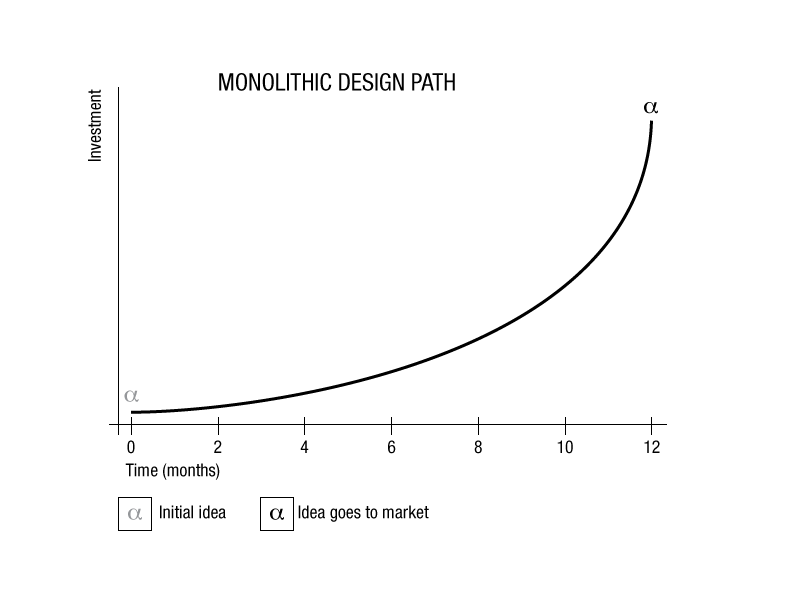
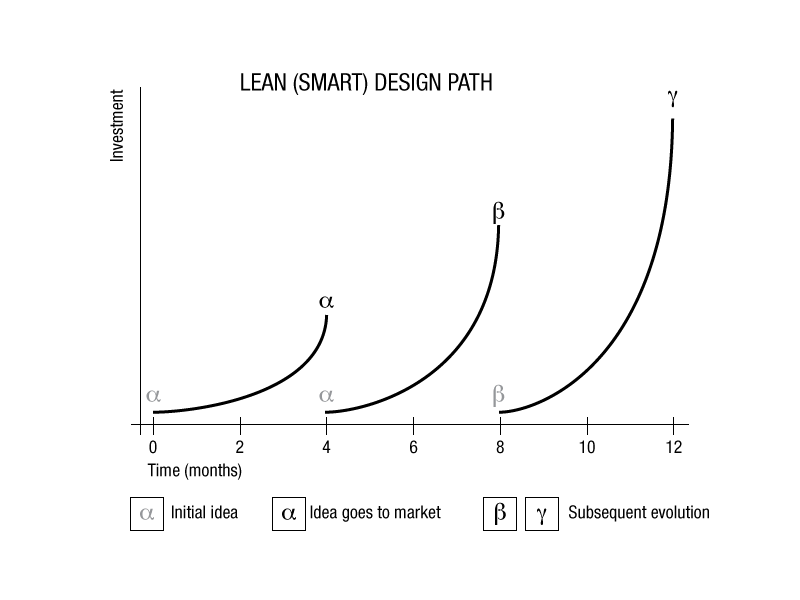
On comparing the two methods, the graph below (C) illustrates an investment strategy in blue which reduces risk while increasing appropriate outcomes which have a fail-safe mechanism built in.
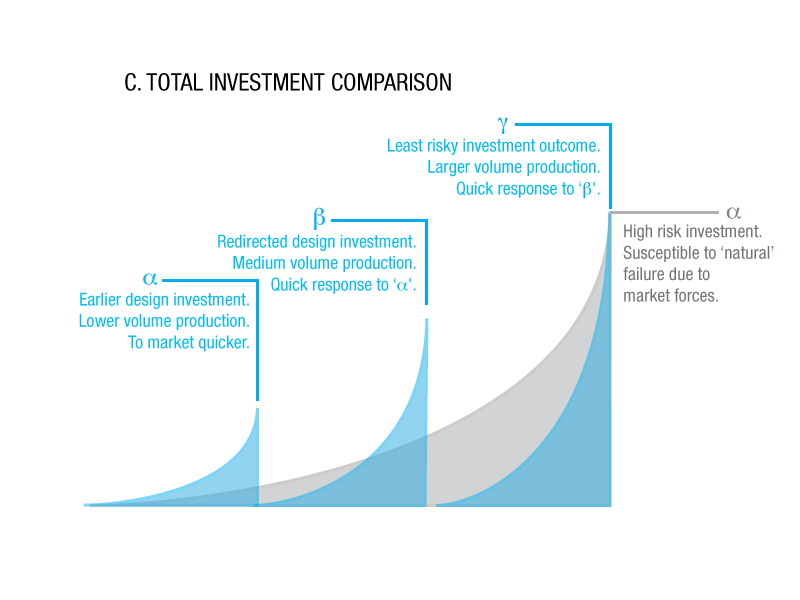
This methodology is not dissimilar to prototyping techniques, with the minor difference that the product goes to market in smaller quantities up front. This necessitates alternative production technologies to permit this fast turnaround.
Spacetime
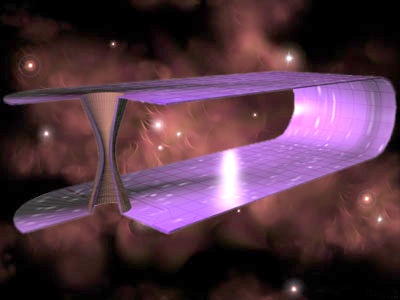
http://www.genetology.net/index.php/981/beeldende-kunst/
In 1895, in his novel The Time Machine, H. G. Wells wrote, "There is no difference between time and any of the three dimensions of space except that our consciousness moves along it", and that "any real body must have extension in four directions: it must have Length, Breadth, Thickness, and Duration". Ref. http://en.wikipedia.org/wiki/Spacetime
The design process, like every process, occurs within four dimensions - space (x,y,z & time). Here's a method of modeling those dimensions in a way which helps the design dilemma of prediction and imagining the future. It's a design machine posing as a time machine.
Designers are often asked to produce a range of concepts to satisfy a particular brief. From those concepts, the client uses a mixture of trusted advice and personal intuition to make decisions which will determine the quality and ultimately the survival of that entity. The process has a lot to do with prediction - what will the future look like? What has worked in the past? What do we want the future to look like? What in the past would we wish to avoid? Be great to simply jump into one's own time machine to see how the future looks and feels.
I came out of design school back in the dim darks as a young industrial designer with the impression one could affect the future. Anything was possible - in an ideal world. It soon became clear that there are no perfect conditions for product development, just the dynamic natural and chaotic world we live in!
So the next great journey began, the quest to better understand the nature of design, along with the ailing manufacturing environment I'd been thrust into. This tough landscape is dotted with derelict factory shells, pillage and compromise. It's very much an apocalyptic red horizon. So what of the future?
Science has always had a huge role within the product design profession but can often take second fiddle to the arts. As projects became more demanding, so the complexities multiply. Sometimes the intuition borne of the arts can cope - but not for long. The opportunity to explore the design methodology as a natural system seems to make more sense. Treating each and every project as a dynamical system - as ever changing and rarely predictable - seemed to make sense.
Product development is a process which operates as part of nature - and the products subject to this design attention are themselves required to survive as part of and within natural systems. Science from every persuasion is dedicated to exploring nature, and what can be described as dynamical systems. It is in the very nature of endeavour where the challenges lies.
From this perspective one can deploy the science of nature, and as a creative designer build around that understanding. Some of the fields of endeavour pertinent to the design effort include unpredictability, species survival, strange attractors, reproduction, turbulence, redundancy and evolution.
Building a time machine
This time machine doesn't look like those depicted in 'Back to the Future' or 'The Time Machine', but more like the old woolen jumper you pull out on a cold winter's night.
The first two images below show the prototype of the time machine, and an earlier model (balloons) demonstrating a more disparate project model. Visualize a straight line floating in space. That line spans an infinite range of user experiences at an instant in time. As time ticks second by second, so the line span becomes an extrusion, as is represented in this model by a length of paper - off the roll.
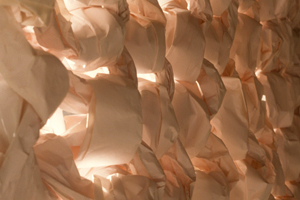
Time machine model
View from outside the four dimensional space/time continuum, a close-up of the interlocking time lines, and the balloon model demonstrating a more typical monolithic approach.
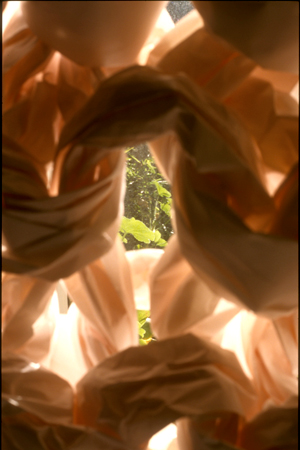
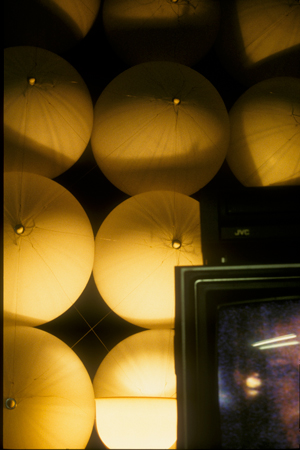
The simplest user experience is one where the extrusion is straight and flat, like a flat sheet of paper, representing a smooth and predictable topography. The model displays 'direction folds', where the most simple re-direction fold is one where the folds are controlled and straight - think a folded paper napkin. These folds are the type of re-directions one might predict when designing a new product.
From this, one might plan a project to fold three times at predetermined distances and in pre-arranged directions to result in an origami crane, for example. Highly predictable, just as long as the folds occur in the correct positions. When one replaces the paper spans over time with a unit of 'user experience' we then find that to end up with a final outcome which looks like a crane we must predict the future folds with exact precision.
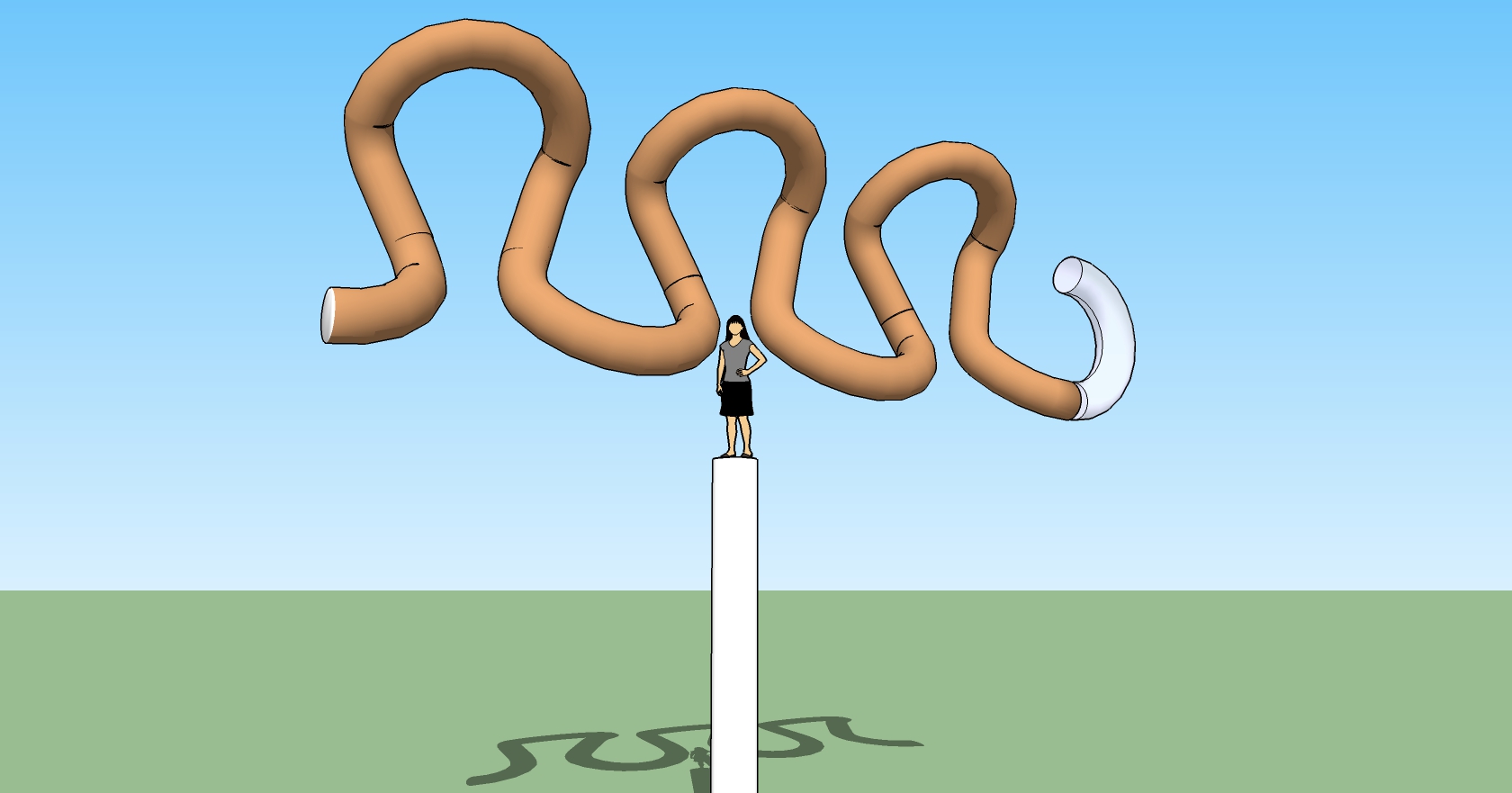
Historical events
Mapping the past as linear progression distinguished by cycles of change and redirection.
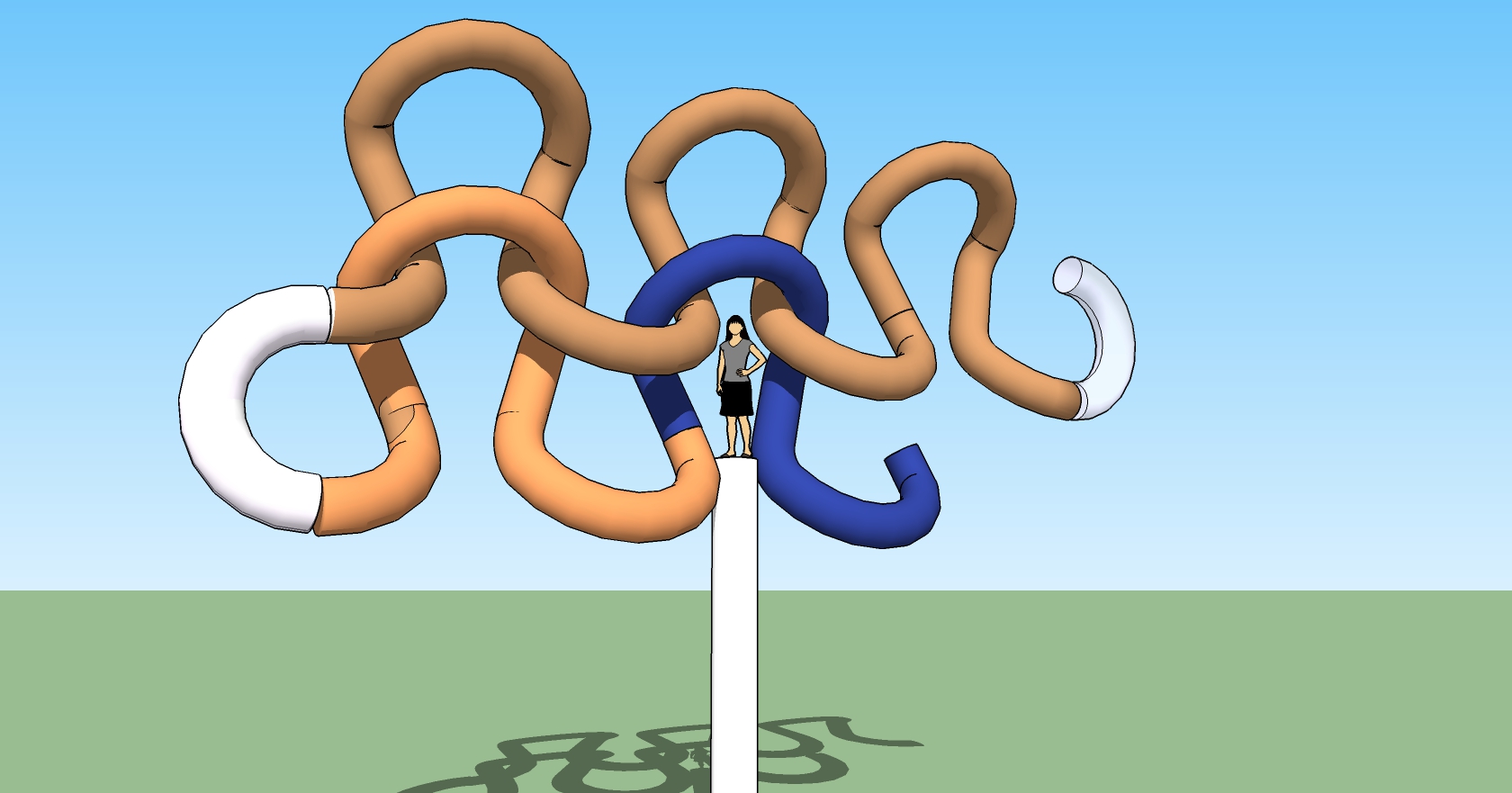
Design project
Developing a product in real time, as illustrated in blue on the timeline. The white row ends indicate the seasonal nature of natural cycles, such as the calendar year.
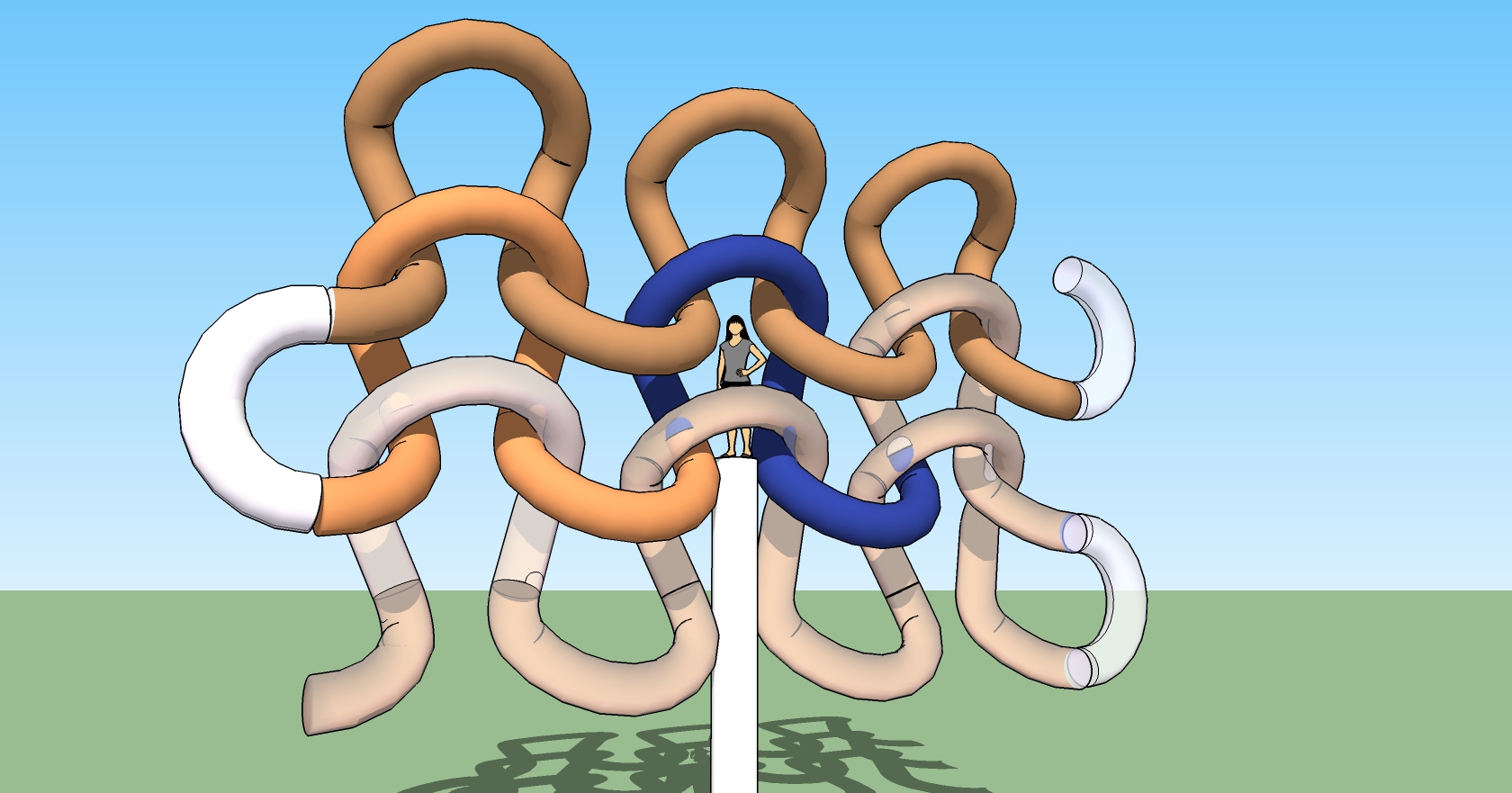
Predicting the future
The 3D linear model of the past and present as linear progression into the future. How does the current design strategy account for unpredictable events down the track?
The knitted time machine is not a entirely predictable topography, but it does display regular cycles - or periods. Importantly, each knit is dependant on the prior knit, and displays a necessary range of cycle times. These can be equated to days and years. A knitted topography which has 365 knots in one row then 365 in the next equates to the passing of years, but importantly each knit is dependent upon the interconnectedness of the prior year. This is called a redundancy loop - where the experience of the present is influenced by the past, and in this model the proximity of interactions relates proportionately to influence.
Compare this knit model to the balloon model, where the rubber surface of the balloon represents the user experience. There are no folds. The whole experience is seamless, and requires no critical direction changes other than the constant curve of the sphere, and entirely predictable experience model. The cycles are disparate, with each balloon representing one full event cycle. These events rarely interactand only at predetermined points in the topography.
I look at these two models I see two different experiences, one is predictable but displays a pleasing cool modernism. The other appears less predictable at certain scales, but on stepping back displays a clear knit pattern. Which is more representative of user experience? The knit is intuitively a better model for dynamical systems for a number of reasons, most obviously that the folds occur within certain bounds yet at the same time no one fold is the same. The knitted paper model was constructed by knitting a roll of old facsimile paper onto two large timber needles. In this case a knit one, pearl one cycle was chosen. Different environments and the accompanying interactions can be represented by specific knit styles.
Travelogue
Can one take the journey through the time machine to experience the future and the past?
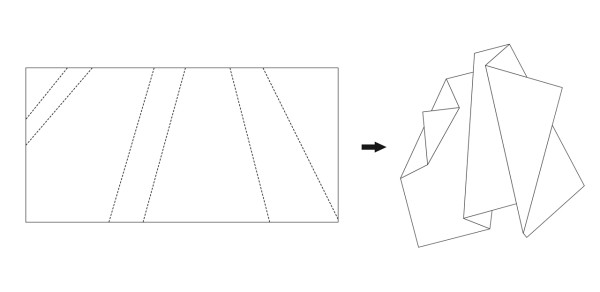
Folding spacetime
From a distance this Folded Tones rug looks from Enoch Liew like a folded sheet of paper. The temptation is to straighten the sheet out - although you know the more you try the more unintentional folds you'll create!
To place yourself into the model take a moment to look straight ahead - that's the way forward. As you do so, take in your periphery vision in both directions. This represents the extent of the 'experience span' for the moment. You have just travelled inside the time machine! It's been a smooth ride so far - pretty planar in fact. Next thing you find yourself deciding whether to continue with this exercise - you've just experineced your first fold. If it was an easy decision it was probably more of a smooth undulation. You're feeling more sceptical or stressed about this whole model thing and are about to shut the whole thing down. That's a seriously sharp experience fold! Dammit! Now, tell yourself you'll read on for 7 more seconds then shut down. You've just set your first predictive fold in the model, which is coming up fast unless something else takes your eye and throws a fold in there before you get to your planned fold - the phone rings!
Ultimately the scale of folding is as relevant at all levels of magnification. It's a matter of deciding what metrics are important in the representation of past and future.